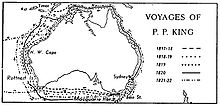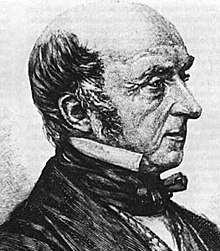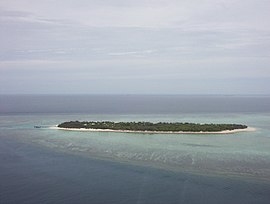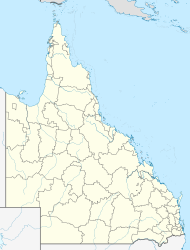|
Capricorn and Bunker Group
The islands and reefs of the Capricorn and Bunker Group are situated astride the Tropic of Capricorn at the southern end of the Great Barrier Reef, approximately 80 kilometres east of Gladstone, which is situated on the central coast of the Gladstone Region, Queensland, Australia.[1][2] Many of these islands form part of the Capricornia Cays National Park and are part of the Great Barrier Reef World Heritage Area. GeographyThe Capricorn and Bunker group of islands of the southern Great Barrier Reef lies between 45 and 75 km (28 and 47 mi) from the adjacent departure ports and urban centres of Yeppoon, Gladstone, Town of 1770 and Bundaberg. The Capricorn and Bunker groups (including Lady Elliot Island and Reef) are a distinct group of 22 reefs straddling the Tropic of Capricorn, at the southern end of the Great Barrier Reef. There are 16 permanent coral cays on these reefs, including twin cays on Hoskyn and Fairfax Reefs. North West Island (105 hectares, 260 acres) is the largest coral cay in the Great Barrier Reef Marine Park. The islands have high natural values, notably breeding populations of seabirds, marine turtles and coral cay vegetation. Capricorn Group  The Capricorn Group of islands consists of nine coral cays:
Additional to these are several reef structures separate from the individual island but still part of the Capricorn Group of islands including
A tourist Resort and Marine Scientific Research Station have been established on Heron Island. A manned lighthouse operates at North Island and the University of Sydney operates a field research station on One Tree Island. Bunker GroupThe Bunker Group consists of five coral cays:
In association with HistoryEuropean pre-discovery of the Group (close sailbys)During Captain James Cook's first voyage of discovery he sailed well inside the island group between 21 and 25 May 1770,[3] typically two to five miles (3.2 to 8.0 km) offshore. He then made his second landing in Australia at the town of 1770.
During Matthew Flinders' exploration of the Australian coastline in Investigator, a 334-ton sloop, to make a survey along the southern coast of the Australian mainland he passed inshore of the island group.
Discovery of the Bunker GroupIn 1803 Captain Eber Bunker of the whaling ship Albion was the first European to discover the region and gave his name to the southern group. The Mitchell Library holds a portrait of Eber Bunker wearing a white waistcoat and white linen ruffled shirt each with stand collars, a white stock at neckline, and a navy blue wool double-breasted jacket with brass buttons titled Captain Eber Bunker, 1760–1836, The first of the Whalers, Arrived New South Wales 1791.[6][7] Charting of the Groups  The southern cays and reefs were first chartered between 1819 and 1821 by Lieutenant Phillip Parker King Royal Navy initially in Mermaid and later in Bathurst.
The main charting exercise for all the islands and reefs was carried out in 1843 under the command of Captain Francis Price Blackwood in HMS Fly which was accompanied by Bramble. In 1841 Blackwood was appointed to command the corvette HMS Flyin the first hydrographic survey commissioned by the Admiralty for exploring and charting the north-east Australian coast. Fly, fitted with costly instruments, and carrying two scientists, Joseph Jukes, geologist, and John MacGillivray, zoologist, sailed from Falmouth in April 1842 with the cutter Bramble, under the charge of Lieutenant Charles Yule. After a stop in Hobart Town from August to October, the two ships called at Sydney and began the survey in December 1842. In the next three years Fly charted from Sandy Cape to Whitsunday Island, including Swain Reefs and Capricorn Islands and the broad passages between. On 7 January 1843, was the first time that the crew of Fly set foot on the First Bunker Island (Lady Elliot Island).[9] Fly then carried on and on 10 January 1843, anchored off One Tree Island and gave the island its name. The crew of Fly landed on this island the following day
The naturalist, Professor J. Beete Jukes, was on board HMS Fly and his published journal provides valuable information on some of the cays. Early uses – guano mining 1890sThe mining of guano (bird droppings) was carried out by J. T. Arundel & Co, a company controlled by John T. Arundel that evolved into the Pacific Islands Company. Mining occurred on Lady Musgrave Island, Fairfax Islands and North West Island during the 1890s. This was an extension of a more substantial guano mining operation on Lady Elliot Island to the south and several of the south Coral Sea Islands particularly Bird Islet part of Wreck Reefs and Raine Island, where profound impacts on vegetation were sustained as a result of the industry. Some remains of these activities are still evident. A good description of part of the operations from 1899 can be found below
Yet latter during September 1933 the leases and guano rights of Fairfax and Hoskyn Islands, off Gladstone, were sold by auction at Gladstone. They were bought on behalf of the Barrier Reef Phosphate (Guano) Syndicate.[11] It is unsure if the project ever succeed in the removal of guano from Hoskyn Islands. Early uses – turtle soup canneriesTurtle soup canneries operated on North West Island from 1904–14 and 1924–26, and on Heron Island from 1925–29. Old boilers and other remnants from these activities remain on site. Tourist resorts 1930sA concrete slab is the only remnant of a resort which operated at Lady Musgrave Island during the 1930s. The island had been a hub for a number of pleasure cruises when eventually more extensive construction of tourist facilities occurred in 1938 and 1939 at Lady Musgrave Island, including six cottages and other facilities.[12][13] In 1932 Captain Christian Poulsen, engaged in bringing fishing parties to the reef, realised the potential of Heron Island as a tourist attraction. In 1936 he bought the lease of the island for £290 and set up a tourist resort which is still in operation. Islands as military target practice 1940sEast and West Fairfax Islands were used as a bombing range by the Royal Australian Air Force and Royal Australian Navy from the 1940s through to the 1960s. It is likely that during World War II Lady Musgrave reef was also used for bombing practice "with the reef now practically a marine desert" as reported in 1952.[14] Historic and other shipwrecks, as well as an aircraft wreck, are located on several reefs surrounding the cays. Current usesA lighthouse was constructed on Lady Musgrave Island in April 1974. Much of this area comes under the Capricornia Cays National Park with current usages including camping, permitted on three cays up to the following limits:
The area also has many visits by both passing vessels cruising the Queensland cost and day trippers in fast jet catamarans (typically Lady Musgrave Island). The area is also of significances as a fishery particularly for King Prawns. Geomorphology and landscapeThe Capricorn and Bunker Cays form part of a distinct geomorphic province at the southern end of the Great Barrier Reef.[15] The cays and their reefs lie on the western marginal shelf, and are separated from the mainland by the Curtis Channel. The cays are not generally visible from the mainland, although Masthead Island may be viewed from Mount Larcom on a clear day. Geologically the cays are young, having developed during the Holocene period, they are mostly around 5000 years old. The sea level was much lower during the last ice age (at the end of the Pleistocene period) and the coastal plain on which today's reefs and cays developed was completely exposed. Early in the Holocene (around 10,000 years ago) the sea level began to rise, until it stabilised at its present level around 6000 years ago. Once the sea level stabilised, it was possible for reef flats to expand and provide potential sites for the formation of cays. Four distinct reef types[16] occur within the Capricorn and Bunker Groups
The cays occur on planar reefs of various sizes and with various levels of exposure to the prevailing winds. These factors have largely determined cay size and composition, which consists either of shingle, sand, or a mixture of both. Cay stability is profoundly affected by cyclonic disturbance. The coral cays belong to two distinct types:[17]
The sand cays are all located to the lee of their reef flat, whereas the shingle cays, with the exception of Lady Musgrave, are located on the windward side. They vary in size, covering from one to 12 percent of the reef top surface area and there does not appear to be any correlation between island size, reef size, or stage of reef development.[18] Flora
FaunaBirds The Capricorn and Bunker Group contains 73–75 percent of all seabird biomass in the Great Barrier Reef World Heritage Area.[19] All the cays, except Broomfield Cay, have been identified as significant seabird breeding islands.[19] In recent years, a colony of lesser crested tern Sterna bengalensis has used Broomfield Cay for breeding. Up to eight seabird species breed on Masthead Island, One Tree Island and Wreck Island, and seven species are recorded from Tryon Island, Erskine Island and Fairfax Islands. The islands making up the Capricorn and Bunker Groups provide habitat for thousands of nesting seabirds, including
The breeding season is between October and April.[20] The white-bellied sea-eagle (Haliaeetus leucogaster) once nested on most of the cays and breeds during the winter months, nest sites are now restricted to Tryon, North West, Wilson, Wreck, East Fairfax and West Hoskyn Islands. All-year resident and breeding within the group are:[21]
Migratory waders often sighted within the group include:  The bird family Charadriidae includes the plovers, dotterels, and lapwings,
 As well as the Scolopacidae are which are a family of waders. Many of the smaller species are often called "sandpipers" and include curlews and snipes.
Birds that often visit the group includes:  The Haematopodidae or oystercatchers
The bird family Phalacrocoracidae is represented by some 40 species of cormorants and shags 2 of which are regularly found in the area
 The bird family Sulidae comprises the gannets and boobies. Both groups are medium-large coastal seabirds that plunge-dive for fish
 Terns are seabirds in the family Sternidae, previously considered a subfamily (Sterninae) of the gull family Laridae. They form a lineage with the gulls and skimmers which in turn is related to skuas and auks. Terns have a worldwide distribution.
The cuckoos are a family, Cuculidae, of near passerine birds. The order Cuculiformes, in addition to the cuckoos, also includes the turacos (family Musophagidae, sometimes treated as a separate order, Musophagiformes).


Reptiles
Mammals
Known shipwrecks on the reefsAmerica a wooden ship of 391 tons and 108 feet in length. The vessel had been built in Quebec, Canada, in 1827, owned by James Gray and captained by Robert Donal. The vessel America had taken convicts to Sydney in 1829 and to Hobart in 1831.
Diana A wooden carvel schooner / brig of 103 tons and 70 feet in length built in Sydney in 1847 by the builder Ale and owned by C.L. Throck. The vessel ran aground on 1 June 1864 in the Bunker Group at the northwestern side of "middle island" (she was wrecked on Fairfax Island (middle island - Bunker group)) while loading guano.[23]
Pioneer Was wrecked on 12 March 1866 on Masthead Reef or Polmaise Reef. The 87-ton, 80-foot-long (24 m) two-masted schooner had been built in San Francisco in 1854. The Pioneer was a regular coasting schooner; during the 1860s she had been carrying a cargo of timber and no lives lost.[23]
Britons Queen struck Masthead Reef/Polmaise Reef on 21 March 1866. The 80-foot-long (24 m) 2 masted schooner of 119 tons had been built in 1837 at Cowes on the Isle of Wight and was a regular coasting schooner during the 1850s and 1860s; it had on board a cargo of hides and tallow as well as 7 passengers.:[24] All of the 14 passengers and crew landed safely on Masthead Island, then proceeded to Rockhampton. Cosmopolite was wrecked on 15 October 1866 on Masthead Reef/Polmaise Reef. The vessel was a wooden carvel Brig of 145 tons and 85 feet in length and originally named David Henshaw built in Newcastle in Maine and had previously been registered at San Francisco (1849) at it arrived in Hobart on 17 April 1851 after having been purchased by Mr Boys for £700 stg.
Willing Lass sunk 5 July 1868 on Masthead Reef or Polmaise Reef Brigantine (Barquentine?) of 107 tons and 81 feet in length. Built in Nova Scotia by Jam in 1852 the vessel was struck by a squall during a voyage from Rockhampton to Richmond River under the command of McNeil. A course was set to steer her ashore when the wind dropped, leaving her helpless to drift onto the reef where rising seas soon destroyed her no lives lost carrying ballast shallow site.[26] Jane Lockhart sunk between 11 and 17 December 1868 on Lady Musgrave Island / Heron Island / Masthead Reef or One Tree Island. The vessel was a two-masted schooner. Departed from Sydney with general cargo for Broadsound; and ran aground on Lady Musgrave Is; maybe on Heron Is or One Tree Island or Masthead Reef. Lost on a reef off Heron Island on the night of 17 December 1868. The crew took to the boat and safely reached the pilot station at Keppel Island.
Hannah Broomfield a brigantine was lost on 30 April 1872 in the vicinity of the northern edge of the Capricorn Islands Most of her cargo and gear was recovered and the vessel was later refloated from Broomfield Reef but some time later wrecked in New Zealand in 1880.[28] Built in the Tweed River of New South Wales in 1865 and registered in Wellington she had a gross tonnage of 120 tons and was 90 feet long Polmaise was a barque which hit Polmaise Reef off Masthead Island on 2 February 1873. She was outward bound from Rockhampton for London with a general cargo the vessel was subsequently salvaged. It is believed that the wreck site has been found and it lies in shallow water. The vessel struck the reef and remained fast on falling tide. The master and most of the passengers left in the pinnace to obtain assistance, leaving the mate in charge. The Polmaise
After which the reef in named was a wooden Barque of 753 tons and 171 feet in length was built by Ale in Dundee England in 1853[28]
Agnes was a two-masted wooden schooner 82 feet in length and 96 tons. Built in Singapore in 1875 was wrecked on North Reef or Tryon Island reef on a voyage from Sydney to Townsville with general cargo of wool on 16 September 1878[28] Tambaroora on 22 July 1879 the steel steamship struck Polmaise Reef The steamship was 162 feet in length and 406 tons built in Glasgow in 1875, she was wrecked on Polmaise reef while on a voyage to Rockhampton from Sydney via Brisbane and Maryborough, carrying general cargo of grain/produce there were no deaths. The wreck was later purchased for 140 pounds and hopes were high that she could be refloated until examination showed her to be breaking up underwater She lies in shallow water about 100metres from the reef and her stern post comes very close to the surface, a hazard to boats trying to find the wreck. The wreck is mostly flattened but her boilers a compound single screw motor, rudder and propeller still remain making it a nice change from the reef dives in the area. Within 50metres of the Tambooroora lies the unidentified remains of a timber wreck and within half a mile lie two other wrecks of historical significance, including the wreck of the Polmaise, which the reef is named after, all four ships are declared historic shipwrecks[28] Deutschland A German wooden three-masted barque of 833 tons built in Ost Hammelwarden (Hamburg)., Germany in 1858 of 150 x 32 x 17.5 ft. hit Polmaise Reef on 22 July 1883 Carrying 1,000 tons of general cargo for Rockhampton from London including cast-iron screw piles for the Port Alma Wharf a church organ built to order in London for St. Pauls Church, this German barque ran onto Polmaise (Masthead?) Reef and eventually with plans underway to have her refloated but a gale on 29 September 1883 broke her up became a total loss. The cargo was salvaged during the same year by a large number of vessels the salvaged cargo was sold at auction in Rockhampton[28]
Waterwitch a brigantine of 165 tons built 1873 stuck on 27 August 1884 Polmaise Reef or Masthead Reef[28] 
Italy The 285-ton wooden 133-foot-long (41 m) barque built in Cardiff, Wales in 1867 on a voyage to Cooktown from Newcastle with coal struck a reef (Boult Reef) to the north of No.3 Island in the Bunker Group on 16 November 1885. The master and crew landed safely on the island and after a short rest proceeded to Gladstone. Following and enquiry the master and mate were severely censured.[28] Wisteria Sunk 14 September 1887. The wooden 131-foot (40 m) barque built as the 387-ton Look at Home in 1865 at Gloucester, Mass. On a voyage from Adelaide to Townsville with a cargo of flour, bran, chaff and cement broke up on One Tree Island. An inquiry found that her loss was caused by the incompetence of her master and mate. The master's certificate was cancelled.[28]

Darcy Pratt on 21 January 1893 the wooden carvel brigantine / barquentine Darcy Pratt struck Polmaise Reef while on a voyage to New Zealand with cargo of bone/bone dust from Rockhampton; not salvaged. She was 96 feet long and 149 tons and built in Jervis Bay NSW in 1876[28] Progress on 29 May 1900 the 20-ton ketch Progress hit Polmaise reef on the southern side while carrying a cargo that included explosives. The vessel had left Brisbane on 23 May 1900 and as the vessel passed Bustard Head during the night on a North West course. At 2:30 am the vessel struck Polmaise Reef and was carried onto the reef by a strong spring ebb[28] Pacific The 132-foot, 252-ton screw steamer on 3 July 1903 was wrecked on Fitzroy Reef. The Steamer was specifically designed for transporting timber.[29] Norna On 15 June 1914, near Masthead Island the 89-ton two-masted wooden Schooner built at Brooklyn, New York in 1879 went aground.[29] Cooma was a steel passenger steamer of 3839 tons. She had a triple-expansion single screw and had been built 1907 for Howard Smith Line 330 x 46 x 21.4 ft.
Joyce a 42-foot wooden motor vessel struck the southeast corner of Masthead Island on 4 April 1927.[29] Valante 28 January 1957 Masthead Island.[29] Kokotu motor vessel struck a reef off Lady Musgrave Island during cyclone Emily, 1 April 1972.[29] See alsoReferences
|
||||||||||||||||

